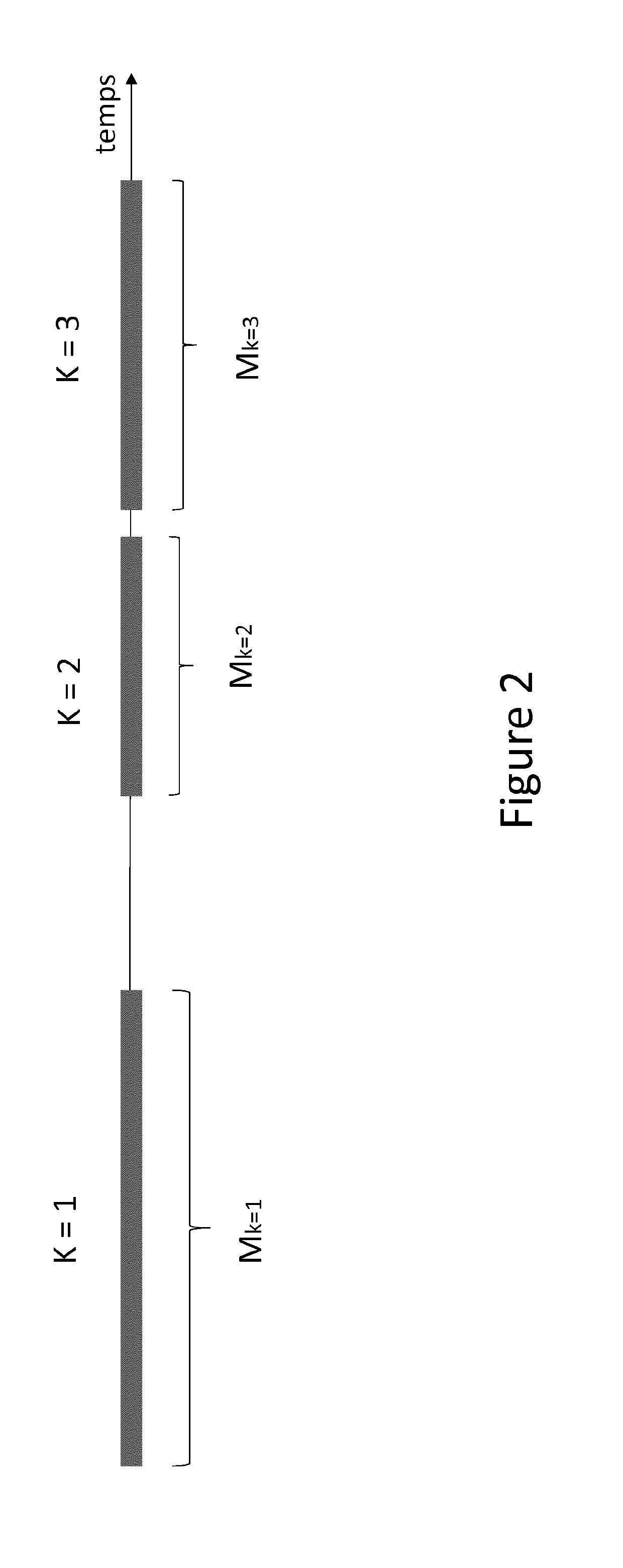Method for measuring a viscoelastic parameter of a human or animal organ
a viscoelastic parameter and human or animal organ technology, applied in the field of biological tissue viscoelastic parameter measurement, can solve the problems of low signal-to-noise ratio, other infections of the liver are currently more difficult to assess, and known technical solutions provide measurements with low signal-to-noise ratios, etc., to achieve the effect of increasing the measured signal, and increasing the signal-to-noise ratio
- Summary
- Abstract
- Description
- Claims
- Application Information
AI Technical Summary
Benefits of technology
Problems solved by technology
Method used
Image
Examples
Embodiment Construction
[0061]FIG. 1 illustrates the different steps of first method 1 of the invention. Method 1 in this case includes three steps:[0062]an emission EM-US by an ultrasound transducer US of a plurality of ultrasound shots, which are propagated in the organ to be characterised,[0063]a recording REC by the same ultrasound transducer US of the reflected ultrasound signals,[0064]a determination DET of at least one viscoelastic parameter of the organ from the recorded signals.
[0065]Advantageously, this implementation enables a parameter such as the attenuation of the ultrasound signals to be measured. This parameter is particularly significant in the case of the human liver since it is related to the presence of steatosis. The structure and characteristics of the plurality of ultrasound shots are represented in FIGS. 2 and 3.
[0066]FIG. 2 shows that the plurality of shots is formed by K groups of ultrasound shots. For example, in the case shown in FIG. 2, there are K=3 groups of ultrasound shots....
PUM
 Login to View More
Login to View More Abstract
Description
Claims
Application Information
 Login to View More
Login to View More - R&D
- Intellectual Property
- Life Sciences
- Materials
- Tech Scout
- Unparalleled Data Quality
- Higher Quality Content
- 60% Fewer Hallucinations
Browse by: Latest US Patents, China's latest patents, Technical Efficacy Thesaurus, Application Domain, Technology Topic, Popular Technical Reports.
© 2025 PatSnap. All rights reserved.Legal|Privacy policy|Modern Slavery Act Transparency Statement|Sitemap|About US| Contact US: help@patsnap.com



